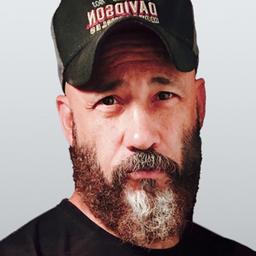R | 1h 35m | War, Action | 2025
The hyperrealism of “Valor” was due to stuntmen-turned-directors Mike McCoy and Scott Waugh capitalizing on the second-to-none expertise and experience of Naval Special Warfare operators. These men famously undergo the most brutal weeding-out process in military history.
This one-of-a-kind experience offered realism-upgrade opportunities like using live rounds in firefight scenes. Using actual 50-caliber bullets instead of blanks produces long flames that erupt from gun muzzles—a revelation as to why they’re called “firefights.”

In the breakout movie “Warfare,” Mendoza plants his own flag in a co-directing collaboration with “Civil War” director Alex Garland. Making further use of SEAL-veteran-only knowledge, “Warfare” can now lay claim to being the most realistic war movie ever made. Among other things, that means Mendoza isn’t using “Warfare” to tell a conventional war narrative.
Based on SEAL Memories
Mendoza, who met Garland while serving as an adviser for Garland’s “Civil War,” chose Garland to assist him in handling the artistic, cinematic, and visionary side of bringing his relentless, senses-assaulting script to life. “Warfare” is the naturalistic re-creation of one particularly traumatic battle circa 2006 in Ramadi, Iraq. In it, a platoon of American Navy SEALs on a surveillance mission was pinned down by Al Qaeda. They awaited backup and rescue.The nonfiction script was written solely by extracting memories from combatants who were there. The resulting visceral and realistic representation of combat details, in all their unthinkable violence, couldn’t spring authentically from the imagination of a civilian filmmaker.
Scenes and Characters
It’s obviously a bold, potentially artistically hazardous decision to cut ties with standard characterization and traditional storytelling arcs. Ray Mendoza had to have known, though, given how successfully “Act of Valor” turned out, that the you’ve-never-seen-this-before factor would carry the day. Challenging a well-cast ensemble of hungry, up-and-coming actors to figure out ways to breathe emotional truth into this particular set of circumstances was also a successful filmmaking tactic.The SEALs blend into one another, with the exceptions of Charles Melton, Joseph Quinn, Will Poulter, and James Gandolfini’s son Michael being facially recognizable, since they’re all on the verge of reaching the next level of fame.

Eliott is tended to by fairly green radioman Ray (as in Ray Mendoza, played by D’Pharaoh Woon-A-Tai). Woon-A-Tai captures perfectly the thrown-in-the-deep-end, stressed-to-the-max, new-guy war experience. He bravely tries to keep a lid on his impending panic while handling the physical trauma and horror strewn around him, not to mention the eardrum overload.

There’s honesty and brotherhood throughout, due to the bonding the actors developed from the mandatory boot camp that Mendoza put them through. Camaraderie shows up in the collective whooping it up over a dance video featuring scantily clad women, and how the men brutally hold each other accountable with verbal commentary.
When one SEAL sniper accidentally-on-purpose misses an opportunity to nail a Jihadist carrying an AK-47 and starts making excuses, his compadres nail him unmercifully by commenting “Weak!” There’s a decent laugh smack-dab in the middle of horrendous trauma, thanks to a comical misuse of a morphine pen injector. Soldiers have long said that there are isolated instances of high comedy in the midst of harrowing, tragic combat, and this is a prime example.

‘Warfare’
I said that no civilian director could come up with these scenes on their own. However, most audience members these days are already very desensitized to blood and guts due to horror and slasher movie genres having skyrocketed, and there are much more disturbing things in those movies than what’s depicted here.“Warfare” has a sound mix consisting of headache-inducing IED explosions, radio comms-chatter, ear-piercing screams, machine guns, Bradley Bushmaster chain-guns, and earth-shattering, shock-and-awe low-passes by F/A-18 Hornet fighter jets. “Warfare” is a stunning, all-encompassing sensory overload.

The second choice is, we as viewers aren’t pampered or relieved from our discomfort after the typical 15 movie seconds of agonized screaming. It’s disturbingly ongoing and ever-present. That’s war. War is hell. This war movie is hell. And I’m curious about this last part, because sometimes war movies are also military recruitment advertisements. “Top Gun” and “Act of Valor” certainly were.
When young men and women witness how randomly and easily you can get blown to bits and land in a wheelchair for the rest of your life, and how every little action in combat can potentially lead to your or someone else’s death, I wonder how it will affect military recruitment in general, seeing as how Generations-Z, Alpha, and Beta, by and large, aren’t particularly inclined to defend the nation. Then again, SEALs are true warriors. “Warfare” definitely won’t hurt BUD/S (SEAL boot camp) applications.









